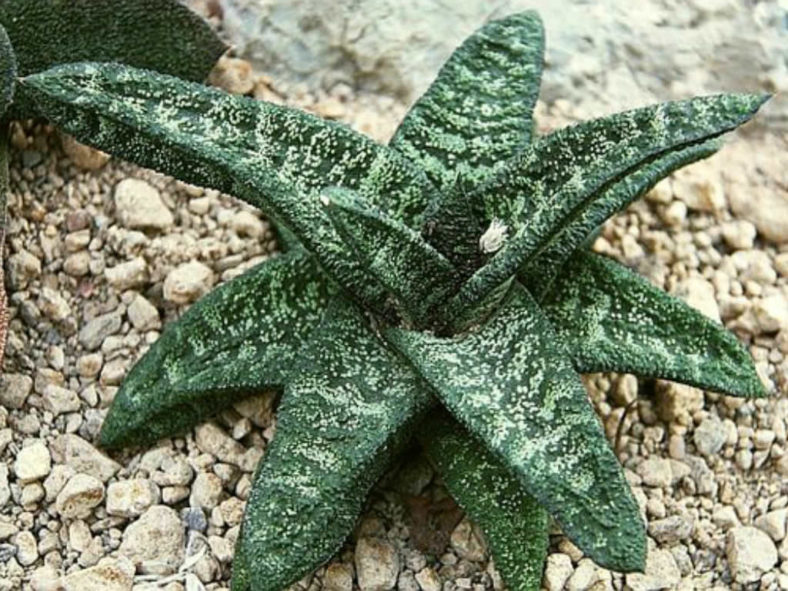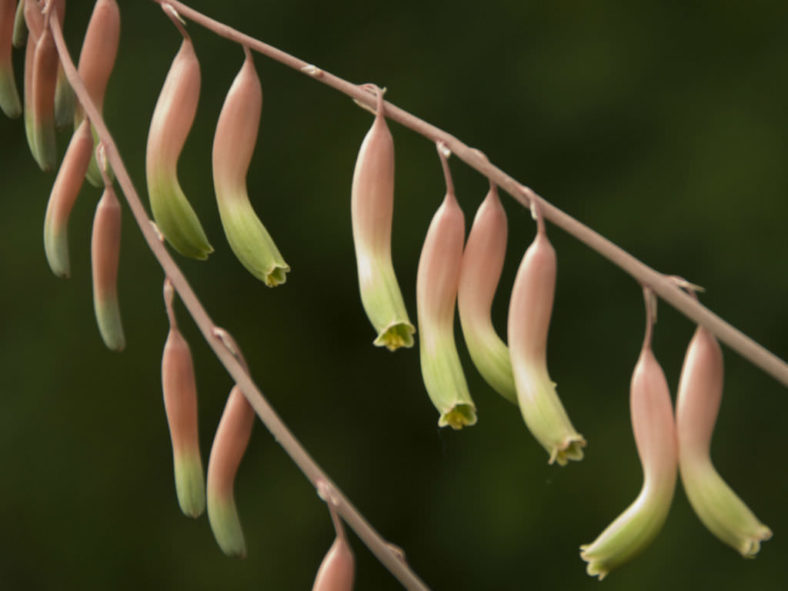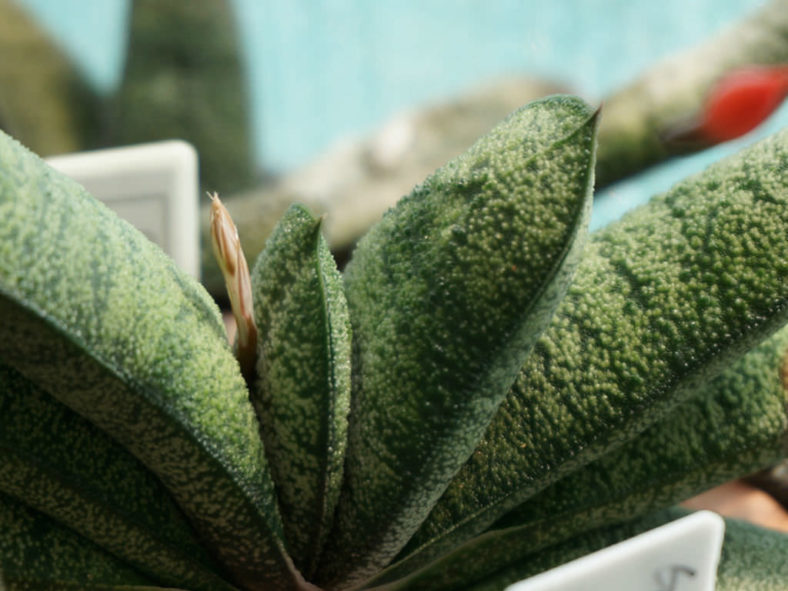Scientific Name
Gasteria batesiana G.D.Rowley
Common Name(s)
Knoppies Gasteria, Knoppies Beestong
Synonym(s)
Gasteria batesiana var. batesiana
Scientific Classification
Family: Asphodelaceae
Subfamily: Asphodeloideae
Tribe: Aloeae
Genus: Gasteria
Etymology
The specific epithet "batesiana" (pronounced "bate-see-AH-nuh") honors John Bates, a trolleybus conductor in London, United Kingdom, and a passionate collector of South African succulents.
Origin
Gasteria batesiana is native to South Africa. It grows in shallow, humus-rich soil east of the inland escarpment, from north of the Tugela River in northern KwaZulu-Natal to the Olifants River Valley in the Limpopo province.
Description
Gasteria batesiana is a charming, small succulent with dark green, highly rough leaves with dense, white spots arranged in transverse bands. It can grow up to 4 inches (10 cm) tall and 12 inches (30 cm) in diameter and produces offsets from the base, forming small clumps. The leaves are distichous at first, but become rosulate with age. They are firm but brittle, triangular to linear, and spreading to recurved, measuring up to 7.2 inches (18 cm) in length and 1.6 inches (4 cm) in width at the base.
The flowers are narrow-elliptic and light pink, with the upper half white with green striations. They can grow up to 1.6 inches (4 cm) long and appear in erectly spreading and curved racemose inflorescences in spring, but occasionally throughout the year.
Varieties, Cultivars, and Hybrids of Gasteria batesiana
- Gasteria batesiana var. dolomitica
- Gasteria batesiana f. variegata
- Gasteria batesiana 'Barberton'
- Gasteria 'Little Warty'

Hardiness
USDA hardiness zones 9b to 11b: from 25°F (-3.9°C) to 50°F (10°C).
How to Grow and Care
These plants are often grouped with Haworthias because they have similar cultural requirements. Both are attractive, small succulents that can tolerate somewhat more shade than many succulents, making them more suitable as houseplants.
Gasterias are susceptible to fungal infections, which usually appear as black spots on the leaves. These result from too much humidity or water on the leaves, but they should not spread too quickly. They have a natural defense mechanism against such fungal attacks: They attack the invading organism and seal off the wounded spot. Generally, any place where Haworthia and Aloe thrive will be hospitable to a Gasteria.
These succulents are small, shallow-rooted, and relatively slow-growing. Therefore, they are often grown in small clusters in wide, shallow dishes. Over time, clusters will naturally enlarge as the mother plant sends off small plantlets.
Learn more at How to Grow and Care for Gasteria.
Links
- Back to genus Gasteria
- Succupedia: Browse succulents by Scientific Name, Common Name, Genus, Family, USDA Hardiness Zone, Origin, or cacti by Genus
Photo Gallery
Click on a photo to see a larger version.


